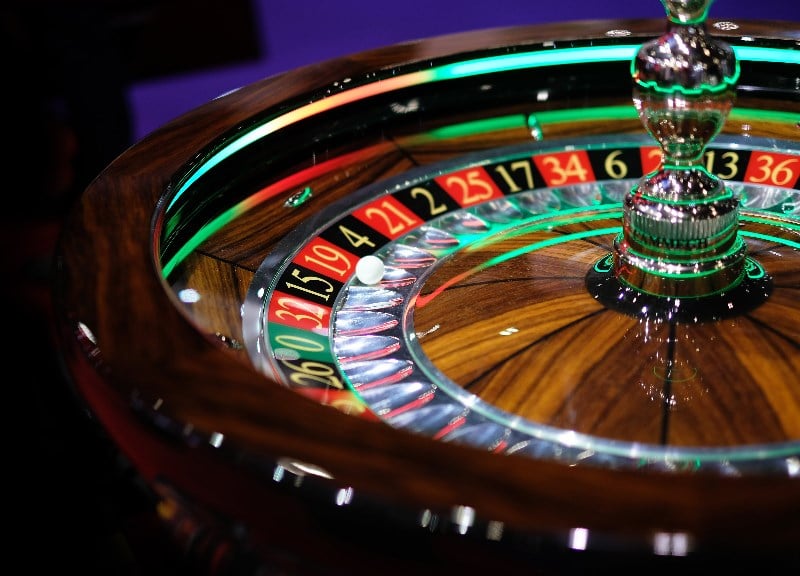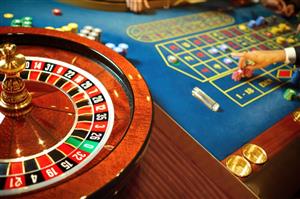How to win roulette every time
17 Aug 2021
Read more
D'Alembert Strategy Simulation: Our Bankroll Results After 30 rounds
D'Alembert Strategy Simulation - what does our bankroll look like after 30 game rounds? Find out how to win with the D'Alembert system by making small, consistent, low-risk wins

The D’Alembert system is well-known for being the simplest and lowest risk progressive roulette strategy in existence, but what’s it actually like to play it? We decided to give it a try at Pots of Gold, using an established testing format – but first a recap on how it works:
What you will learn in this article
- How much we made after 30 game rounds
- Detailed execution of the D'Alembert roulette strategy
- Whether the strategy is worth your time and money
D'Alembert Roulette System Explained
D’Alembert’s system requires you to increase your bet by £1 when you lose, and decrease it by £1 when you win. It’s that simple, so what happened when we tried it out with a £100 bankroll and starting bet of £10? Let's find out:
Round 1
- We bet on evens, and our first of three simulations kicked off with a 33, taking us down to £90
- Our bet was therefore raised to 11 and a 9 came up, leaving our bankroll at £79
- We therefore bet 12, and a 2 came up – taking us back up to £91, lowering our bet to £11
- A 5 was spun, leaving us with £80
- A £12 bet wasted on number 11 left us with just £68
- We now bet £13, and things looked up with a 12, taking us to £81
- A £12 bet and the appearance of 36 raised our bankroll further, up to £93
- A zero then left us with £82
- Another £12 bet left us with £94
- Finally a 4 was spun, taking us to £105
Not a bad result, but more was to follow in the 2nd simulation:
Round 2
- A 6 took us to £110
- £9 bet on a 3 left us with £101
- Back up to £10, our stake brought in another tenner with a 12 on the wheel
- A £9 bet led to a loss of £9 when an 11 came up, taking us down to £102
- A further £10 was lost when the number 1 appeared
- Then a 4 came in, taking us to £103
- A £10 bet yielded a £10 win when 28 came up, leaving us with £113
- Then a 30 was spun leaving us with £122
- £8 bet on number 3 left us with £114
- Lastly, a £9 bet on the number 2 left us with £123
With 2 out of 3 simulations yielding us a decent overall result we were delighted, but the law of averages says you can’t win all of the time, so what of our final test?
Round 3
- We started badly with a 27 taking our bankroll to £90.
- An increased bet of £11 and the appearance of the number 12 changed all that, getting us up to £101.
- An 8 took us to £111
- A 14 left us at £120
- We now bet £8 and spun a 9, leaving us with £112
- A 6 got us up to £121
- A 15 took us to £113
- The zero was then spun – no good for us as this was a European game so we lost the whole £9 stake, taking our bankroll to £104
- A loss of £10 when the 1 came up left us with £94
- Another loss of £11 on the number 11 finally left us with just £83.
The total outcome was £302 for £200 wagered, and this is a classic D’Alembert outcome: A small increase for a small amount of risk.
Does the D'Alembert work?
The great thing about this strategy is that two subsequent spins will always produce a positive result 75% of the time.
In the above example, a win and a loss will leave you with £101; a loss and a win will also leave you with £101, and two wins will leave you with £119 – so the advantages are clear.
You’ll find that your overall result tends to cluster around the £100 mark, so the amounts you win won’t be huge. But any savvy roulette player will tell you that you should be looking for small consistent long-term net wins which ultimately consolidate into solid long-term gains, and this system is a great way to do that.
Related News
- Easy Spread-Bet Roulette Strategy
- Do Roulette Strategies Work? The Myth Busted
- Oscar’s Grind Betting System: Grinding out the roulette wins?
- Double Street Quad Roulette Strategy Explained (With Examples)
- Best Quantum Roulette Strategy to Win
- The Hollandish Betting System Explained: How to use & Results
- Online Roulette Cheats: Can you beat the wheel?
- Martingale Roulette System in Practice: Shocking Results after 30 minutes
- Mini Roulette Strategy: Small steps make big wins
- Paroli Roulette Strategy Explained (Examples Included)
- Best Immersive Roulette Strategy & Tips
- Best Lightning Roulette Strategy to Win
Siehe auch
- Easy Spread-Bet Roulette Strategy
- Do Roulette Strategies Work? The Myth Busted
- Oscar’s Grind Betting System: Grinding out the roulette wins?
- Double Street Quad Roulette Strategy Explained (With Examples)
- Best Quantum Roulette Strategy to Win
- The Hollandish Betting System Explained: How to use & Results
- Online Roulette Cheats: Can you beat the wheel?
- Martingale Roulette System in Practice: Shocking Results after 30 minutes
- Mini Roulette Strategy: Small steps make big wins
- Paroli Roulette Strategy Explained (Examples Included)
- Best Immersive Roulette Strategy & Tips
- Best Lightning Roulette Strategy to Win









